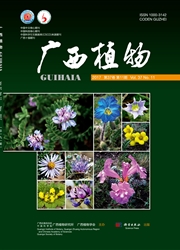

 中文摘要:
中文摘要:
青藏高原有各类天然草地14×108hm2,其中高寒草甸和高寒灌丛约占青藏高原天然草地面积的50%,占全国草地总面积的16.2%。嵩草草甸是高寒草甸的主体,包括矮嵩草草甸、金露梅灌丛草甸、藏嵩草草甸、小嵩草草甸和高山嵩草草甸等,这5类高寒草甸平均地上生物量分别为354.2、422.4、445.1、227.3和368.5g/m2,地下生物量分别为3389.6、3548.3、11922.7、4439.3、5604.8g/m2,地下与地上生物量的比例分别为10.55、10.15、27.82、14.82和15.21,远大于IPCC(2006)报告中地下/地上生物量比例的默认值(2.8±95%)。地下生物量对气候变化和放牧的反应比地上生物量更敏感,干旱和重度放牧均降低了地下/地上生物量的比例。在极度退化状态下地下/地上生物量的比例〈2。对于轻度和中度退化的高寒草甸应以围封禁牧为主要恢复措施,但如果结合补播和施肥,则恢复速率会加快;对于重度和极度退化的高寒草甸,由于草地植物群落中优良牧草的比例极低,仅靠自然恢复很难进行恢复或需要的年限很长,所以必须采用人工重建的措施,并结合毒杂草防除和施肥等措施进行恢复,通过建立人工或半人工草地的措施予以重建。
 英文摘要:
英文摘要:
Alpine meadows and shrublands are approximately 7×108 hm2 which is about 50% of the natural grasslands on the Tibtean plateau and accounts for about 16.2% of the total grassland area in China. Alpine meadow is dominated by Kobresia meadow,including K.humilis meadow,Potentilla fruticosa shrub meadow,Kobresia tibetica meadow,K.parva meadow and K.pygmaea meadow. The average aboveground biomass of the five meadows was 354.2,422.4,445.1,227.3 and 368.5 g/m2,respectively,while the belowground biomass of 0-40 or 0-50 cm soil depth was 3 389.6,3 548.3,11 922.7,4 439.3 and 5 604.8 g/m2,respectively. Their ratios of belowground and aboveground biomass were 10.55,10.15,27.82,14.82 and 15.21 respectively,which were much higher than that of the default value(2.8±95%)recommended by IPCC(2006). The belowground biomass or belowground net primary productivity was more sensitive to the climate change and heavy grazing than above-grassland biomass did. Drought and heavy grazing decreased the ratio of belowground to aboveground biomass,even its value was less than 2 under extreme degradation conditions. Natural restoration is possible for light or moderate degraded alpine meadow for 3-8 years. However,it should be re-constructed for heavy or extreme degraded alpine meadow due to soil quality decrease and poison plant species and weeds invasion.
 同期刊论文项目
同期刊论文项目
 同项目期刊论文
同项目期刊论文
 Fluxes of CO2, CH4, and N2O in an alpine meadow affected by yak excreta during summer grazing period
Fluxes of CO2, CH4, and N2O in an alpine meadow affected by yak excreta during summer grazing period Effect of warming and grazing on litter mass loss and temperature sensitivity of litter and dung mas
Effect of warming and grazing on litter mass loss and temperature sensitivity of litter and dung mas Effects of grazing and experimental warming on DOC concentrations in the soil solution on the Qingha
Effects of grazing and experimental warming on DOC concentrations in the soil solution on the Qingha Effects of litter quality and climate change along an elevation gradient on litter mass loss in an a
Effects of litter quality and climate change along an elevation gradient on litter mass loss in an a 期刊信息
期刊信息
